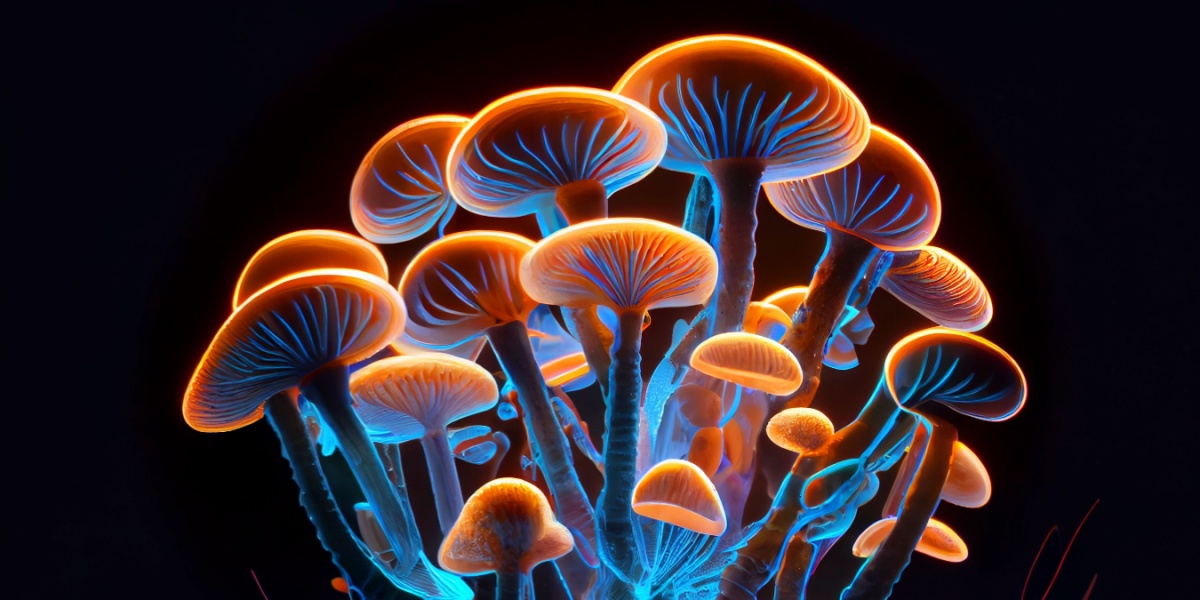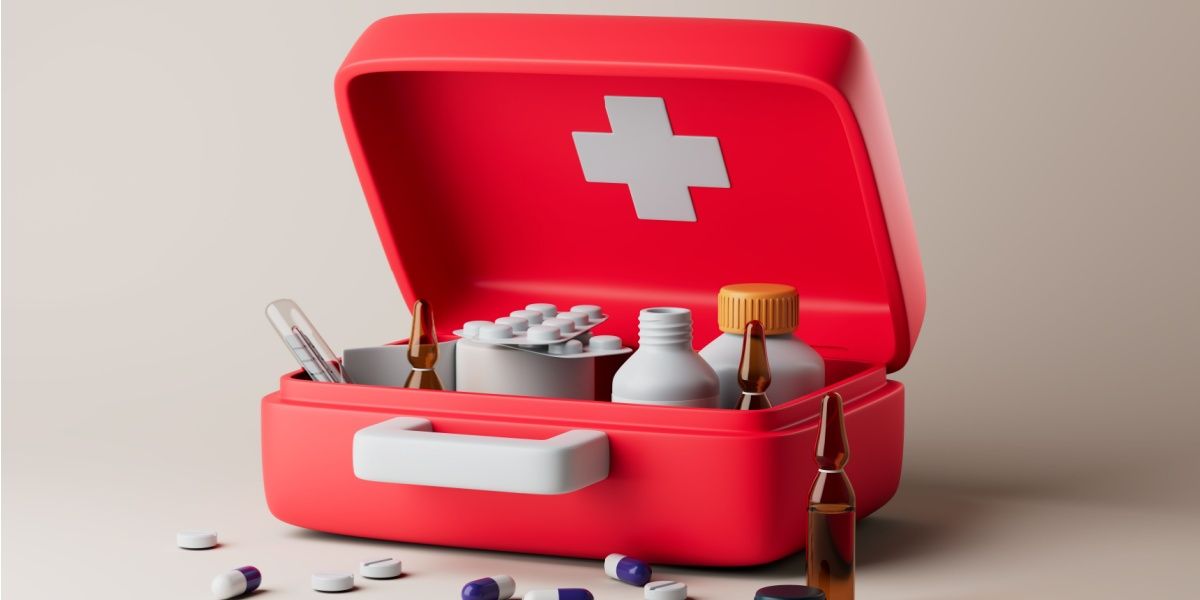Psychedelic and hallucinogenic drugs are psychoactive substances that cause perceptual changes, including visual and sensory distortions and altered states of consciousness. This includes substances such as LSD, mescaline, psilocybin, and DMT.
These substances can cause various risks, which may be reduced by learning and implementing safe drug use techniques.
It is important to note that while the use of these substances has become more socially acceptable and the legality around them is changing, most psychedelic substances remain illegal in the United States.
Possession, cultivation, and distribution of psychedelics can carry heavy legal penalties in most states, including prison sentences.
This guide is intended to promote safety and harm reduction; Recovered does not condone the use of illegal substances in any circumstances.
- 'Set' and 'setting' are important factors to consider before using psychedelics. Ensure you are mentally and physically in the right space first.
- Use drug contamination test kits. Psychedelics are increasingly becoming contaminated with extremely harmful substances such as synthetic opioids.
- Ensure you are not breaking the law. Possession and use of psychedelic substances still hold legal ramifications in most states in the US.
- Educate yourself on psychedelic substances before trying them, especially if you have a history of mental health conditions or disorders.

What are the risks of taking psychedelics?
As with all substances, there can be risks associated with the use of psychedelic drugs. Risks can vary from person to person and may depend on the individual’s health, the strength and dosage of the substance, the environment, and the person’s experience with psychedelics.[1]
Potential risks can include:
- Risks of abuse: Most psychedelics do not produce physical dependence with prolonged use, although this can vary depending on the drug and the individual. It is possible for tolerance to develop, which can lead to an increase in the frequency and amount of use and the risk of harmful substance abuse.[1]
- Physical safety risks: Psychedelics often cause changes in perception and coordination, which can lead to an increased risk of accidental harm. This may also cause an increased risk of experiencing harm from others.[2]
- Experiencing a ‘bad trip’: Psychedelics can cause visual, emotional, and sensory distortions, which can be an enjoyable part of the psychedelic experience. However, in some cases, this can lead to frightening and distressing experiences, often called a ‘bad trip’.Depending on the type and amount of drug used, this can last for a prolonged period, which can feel overwhelming and potentially lead to harmful consequences.[2][3]
- Mental health consequences: Individual reactions to psychedelics can vary depending on the individual’s current mental state. Psychedelics can cause the onset or worsening of psychosis or suicidal thoughts.As such, people with a personal or family history of psychotic disorders such as schizophrenia or mood disorders such as bipolar may be at increased risk of mental effects. It is also possible for psychedelics to cause flashbacks, which can cause people to relive past traumatic experiences.[3][4]
- Physical health consequences: Some psychedelics can impact heart rate and blood pressure, which may cause an increased risk of physical harm, particularly to those with a history of heart conditions, seizures, stroke, or high blood pressure.They can also react with medications, particularly certain antidepressants, amphetamines, other stimulants, and opioids. This can cause an increased risk of cardiac complications or developing serotonin syndrome.[3][5]
Psychedelics that have the biggest risks
Some psychedelic substances are considered to be fairly safe compared to others which can contribute to more severe risks.[6]
Psychedelics with the greatest risks include:
- Ibogaine: Ibogaine is associated with dangerous cardiac effects, such as irregularities in heart functioning that may cause life-threatening or even fatal consequences.[7]
- LSD: LSD is a very potent drug that causes long-lasting effects of around 12 hours. It can cause severe distortions in reality, leading to a high risk of frightening experiences, loss of control, or accidental harm. It may also cause prolonged psychotic symptoms in some cases. Typically, LSD is sold as a liquid dropped onto blotting paper, meaning that it can be difficult to be certain of the exact dosage being taken.[8]
- PCP: PCP is associated with severe physical reactions, particularly in high doses. It can cause seizures, coma, severe decrease in heart rate and blood pressure, overheating, and even death. Other risks include severe psychological reactions, such as irrational behaviors, violence, and suicidal thoughts.[9]
Guidelines for safe psychedelic use
It is not possible to entirely remove any potential risks or dangers when using drugs. The following tips can help to increase personal safety and mitigate the risks of psychedelic use.
Testing
Before drug use, it may be possible to test the substance to gather information about its content. Drug testing kits can be used to check for the presence of other substances, particularly fentanyl, which can cause serious or fatal harm, particularly when taken unknowingly. [3][10]
Some organizations, such as Dance Safe, provide drug testing at events or kits that can be ordered online.
Education
Learning more about the drug before administration can help individuals make informed decisions about drug use. This might include learning about safe dosage and administration, the possible mental and physical effects, and how to recognize and manage signs of an overdose.[11]
Dosage
It is often beneficial to consider a safe and appropriate dosage when using psychedelics, as this may differ from person to person. People who have never used psychedelic substances should consider using a small amount initially, while people who have used these substances before may be able to use larger doses safely.
Regardless of the individual’s experience with the psychedelic substance, it is often a good idea to start with a small dosage, wait for the effects to be felt, and then decide if additional doses are appropriate. Taking too much can increase the risk of unpleasant or frightening experiences, physical and mental harm, and potential overdose.[12]
Set and setting
Set and setting refers to the mood and environment of the individual when using psychedelic substances. This can play an important part in the psychedelic experience and can help individuals feel more physically and emotionally comfortable and safe.[1][2]
For example, some people may find the following increases the chance of an unpleasant experience:
- Anxiety, low mood, and other negative emotions
- Loud noises
- Large groups of people
- Enclosed spaces
- Being around unfamiliar people or places
- Bright lights or harsh images
- In contrast, the following may be examples of set and setting that can contribute to a positive experience:
- Preparing for the psychedelic experience by considering expectations and entering the experience with an open mind
- Quiet environment with soft or calming noises
- Small group of people who are known to the individual and considered to be a friendly and kind group
- Open spaces, in nature or a comfortable environment
- Familiar sounds, people, objects, or smells
- Soft lighting
Coping with unpleasant experiences
Preparing the set and setting can reduce the risk of unpleasant experiences or ‘bad trips’, although this can occur even in safe and comfortable environments. Understanding how to manage your or others’ bad experiences can be helpful.[13]
This can include changing the environment, such as going outside, altering lighting or sounds, or spending time with a trusted person to discuss distressing feelings. It may also be helpful to save the number of a psychedelic helpline so they can be contacted for support during this time. Some of these numbers are listed below.[1]
Using a guide or trip sitter
Some people plan to use psychedelic substances with a guide, trip sitter, or spiritual healer. This person is not under the influence of any substances, although they may have prior experience with psychedelic substances. They can be used to guide individuals through the experience, providing emotional and physical support throughout.[13]
Are psychedelics legal?
Under federal law, all psychedelic substances are listed in the Controlled Substances Act as Schedule I or II, meaning that they are considered high-risk substances with little or no medicinal use.[14]
However, in some states, the legal status of certain psychedelics is starting to change. In recent years some states have begun to decriminalize the use of certain psychedelics, particularly psilocybin, as their therapeutic benefits are increasingly studied. In 2020, Oregon was the first state to legalize the therapeutic use of psilocybin and decriminalize recreational use.[15]
Psychedelic safety helplines and organizations
Various organizations provide helplines for individuals using psychedelic substances or for their family and friends who wish to seek support. This includes:
- Fireside Project: 62-FIRESIDE (34737433) The Fireside Project provides a psychedelic support line that can be accessed by call or text from 11 am to 11 pm. They provide emotional support to people during or after a psychedelic experience or people who are supporting others.
- SAMHSA’s National Helpline: 1-800-662-HELP (4357) Substance Abuse and Mental Health Services Administration (SAMHSA) runs a helpline that is accessible 24/7, 365 days a year, offering information and advice to individuals seeking support with mental health and substance use issues.
- Never Use Alone: 1-800-484-3731 Never Use Alone runs a crisis and overdose prevention line that individuals can call before and during substance use. They can help the individual feel supported during their drug use and can ensure that emergency services are contacted should they become non-responsive or show signs of overdose.
In an emergency, call 911. For suicide and crisis support, call or text 988.
Additionally, many organizations provide information and educational resources about the safe use of psychedelic substances, such as:
Psychedelic-assisted therapy and safety concerns
Since the 1990s, there has been a resurgence of research into the use of psychedelics as a treatment for mental health conditions. Much of this research focuses on psychedelic-assisted therapy for:[2][4]
- Depression, particularly treatment-resistant depression
- Anxiety disorders, particularly anxiety about terminal illness
- Obsessive-compulsive disorder (OCD)
- Post-traumatic stress disorder (PTSD)
- Substance use disorders
Substances involved in this research include psilocybin, MDMA, and LSD. So far, psilocybin and MDMA have been the most extensively researched, with the most promising results.[5][16]
However, there remain many safety concerns relating to this type of therapy, including the potential for severe mental or physical health reactions such as triggering past trauma, psychosis, and heart-related conditions.[3]
Due to these concerns, studies investigating the effectiveness of these treatments must be rigorous and extensive. This has led to the development of strict protocols for psychedelic-assisted therapy, including specific requirements for the setting and environment, dosage, therapist training, and after-care. With time, they may be accepted as mainstream treatments.[2][3]
Final thoughts
Individuals who wish to use psychedelic substances should always do so with caution, as there can never be 100% mitigation of risk. Learning harm reduction techniques and safe drug use strategies can help increase personal safety and the likelihood of an enjoyable experience.
It is also important to bear in mind that, under federal law, psychedelic substances are illegal and their possession and use can be a criminal offense with severe legal repercussions.


-(1)-guide-detail.jpg?v=1722502946)

